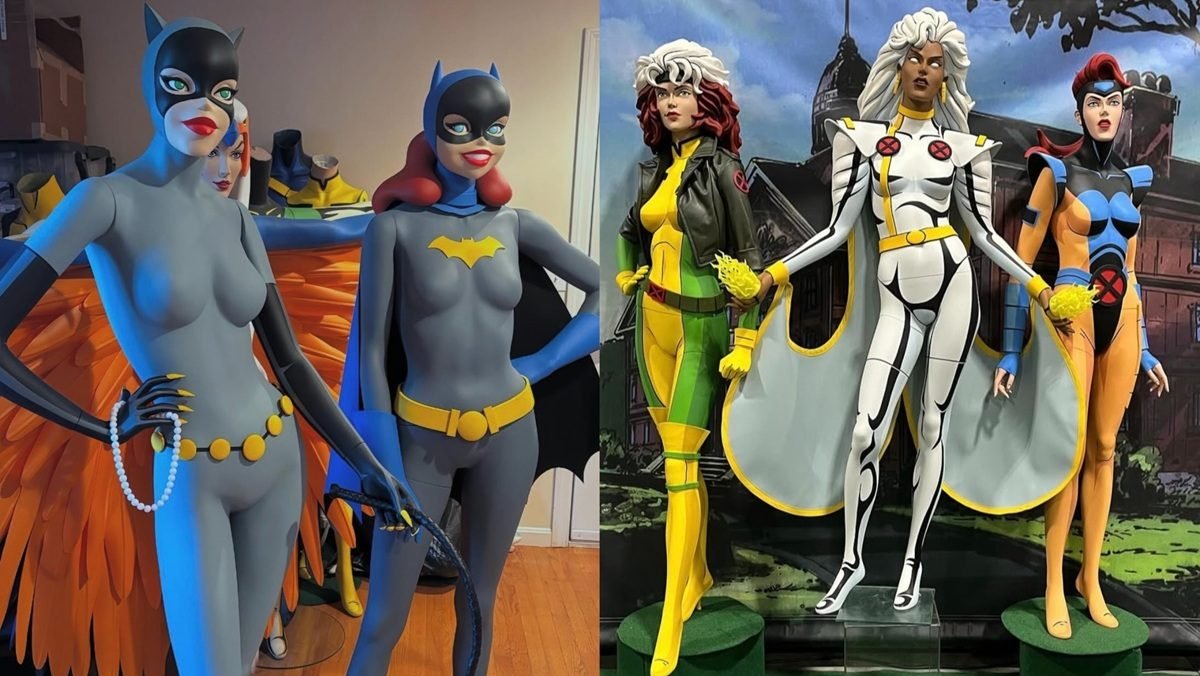In a tiny room in a hidden shopping strip in Northeast El Paso, on any given day of the week, one can find artists — amateurs and experts alike — dipping their fingers into moist clay and molding plates, vases, mugs and figurines.
And the watchful eye of their benefactor, Phillip John “PJ” Romero, is always present as they hone their craft and find a peace that can be elusive beyond the doors of his studio.
“I feel like I am sharing the therapeutic value of ceramics,” Romero said. “It’s very relaxing for some people and it’s become a staple for them.”
Romero first opened the doors to his studio, PJ Romero Artworks at 120 S. Carolina Drive, three years ago — now, as the community around his studio grows, so too is the building itself, branching into a vacant space next door and ballooning from a restrictive 500 square-feet to a comfortable 2,400 square-feet.
“We’ve been able to make it work,” he said, “but we’re all so excited. I’m so thrilled to make it bigger — where it was just a ceramics studio, I’m trying to make it an art studio.”
But there have been many miles traveled for Romero before and since bringing his dream to life and there will be many more to go as that dream grows.
Road to ceramics
Romero was born in El Paso, but spent much of his youth moving around the country, taking up residence in Hawaii, Arizona, South Carolina and California before returning to El Paso when he was 15 years old.
After graduating from Riverside High School, Romero tried going to college, but it never stuck. So, after being married, having children and getting divorced, he joined the U.S. Army at 27 years old.
Romero did two tours in Iraq and spent seven-and-a-half years on active duty, but a roadside bomb struck his vehicle and he returned home to El Paso as a disabled veteran in 2010.
Upon his return, he signed up for classes at the University of Texas at El Paso, but his chosen major, graphic design, did not resonate the way he had hoped.
“I absolutely hated it,” he said with a laugh. “I feel like it wasn’t what I was looking for.”
But as part of his art-based major, Romero was exposed to a broad set of practices, from drawing to painting and, eventually, ceramics.
“I changed my major almost immediately,” he remembered. “I found a lot of value in the art therapy that is ceramics, it helped me a lot with my combat-related trauma.”
From there, his art soared to new heights — he became a teaching assistant in the ceramics department at UTEP, which led to jobs leading workshops and classes and, eventually, in 2015, a job at the El Paso Museum of Art — but that was all shuttered when the COVID-19 pandemic hit in early 2020.
“As an artist and an employee (at the museum), I didn’t make enough money to get unemployment,” Romero said. “So, I was eating through my savings.”
It was then that he decided to open his shop with only two wheels, one kiln and “a big old dream.” The shop will celebrate its third anniversary this month.
“I’ve kind of just done my best to serve my community and spread the word about art,” he said. “It’s a grand old time around here, it’s a lot of fun. I try my best to show support to these individual people and my community. It’s become one of my biggest drives.”
Growing the community
Keeping his growing art community alive has not always been easy, Romero said — as sole proprietor of his art business, everything on offer, from the clay to the wheels and the kilns, has been paid for out of his pocket.
“It’s been very challenging being able to maintain this here, but what drives me is being able to help people and the community we’ve created,” he said. “I am here seven days a week … and I offer three classes daily.”
“There’s just some days I want to get up and take a day off … but I come here because I have at least two people who come to every class,” Romero continued. “If I have at least two people, it’s worth being here.”
But with his studio expanding into an adjoining space, more than doubling its size, Romero hopes to become more than a ceramics studio, he wants to give other artists an opportunity to share their crafts as well.
His vision for the future includes becoming a nonprofit, so he can tap into state and federal grant opportunities, and allowing other El Paso artists to teach their art — drawing, painting, printmaking and more — and grown an already-thriving community of artists.
“I haven’t figured out all of the logistics of that yet,” he said, ” but if I have an artist who wants to teach, he or she can come in here and have a three-hour class on how to paint or whatever.”
The new space also means there will be room for a small showroom where Romero and his contingent of artists can show and see their work.
“It’s all a matter of reorganizing,” he said of the task ahead. “The trick is, I have all these wonderful plans, I just need to find creative, alternate ways to reach those goals and make my clients happy.”






